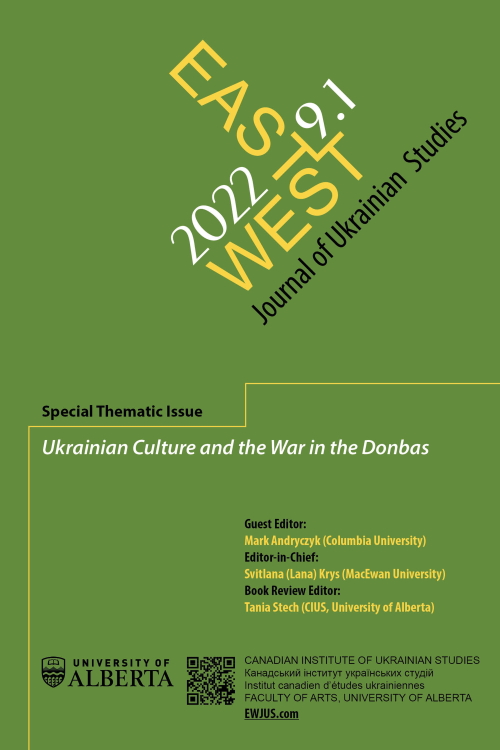Art Resistance against Russia’s “Non-Invasion” of Ukraine
Art Resistance against Russia’s “Non-Invasion” of Ukraine
Author(s): Nazar KozakSubject(s): Fine Arts / Performing Arts, Crowd Psychology: Mass phenomena and political interactions, Sociology of Art, Russian Aggression against Ukraine
Published by: Canadian Institute of Ukrainian Studies at The University of Alberta
Keywords: activist art; art resistance; simulation; “non-invasion;” media war; Russian-Ukrainian conflict;
Summary/Abstract: When Russia invaded Ukraine in 2014, the Russian media ran what I propose to call a simulation of “non-invasion”—a spectacle aimed to distance Russia from the war. This essay explores activist art resistance against this simulation. Specifically, I discuss three art projects that were staged during the first, most violent year of the Russian-Ukrainian conflict: Mariia (Maria) Kulikovs'ka’s performance at “Manifesta 10” in St. Petersburg, Serhii Zakharov’s guerrilla installations on the streets of occupied Donetsk, and Izolyatsia’s #onvacation occupation of the Russian pavilion at the 56th Venice Biennale. These art projects, I argue, not only attacked the simulation from the outside as independent entities, but, by penetrating the simulation on site and online, they disrupted it from within. I offer three reasons to support this claim. First, these art projects superimposed images of the invasion over the physical sites where the “non-invasion” simulation dwelt and, in this way, not only made the war visible but also produced “a glitch in the matrix” effect—a conflict within the simulation visual regime that was inconsistent with its concealment function. Second, they “hailed” (in Louis Althusser’s terms) actants of the simulation as subjects of Putin’s regime, provoking suppressive reactions that proved Russia’s participation in the war—which the simulation, thus, failed to downplay. And third, with carefully orchestrated strategies of online outreach to the public, these art projects attached themselves to the media dimension of the simulation, making the simulation’s media proliferation work against itself.
Journal: East/West: Journal of Ukrainian Studies (EWJUS)
- Issue Year: 9/2022
- Issue No: 1
- Page Range: 67-104
- Page Count: 38
- Language: English

